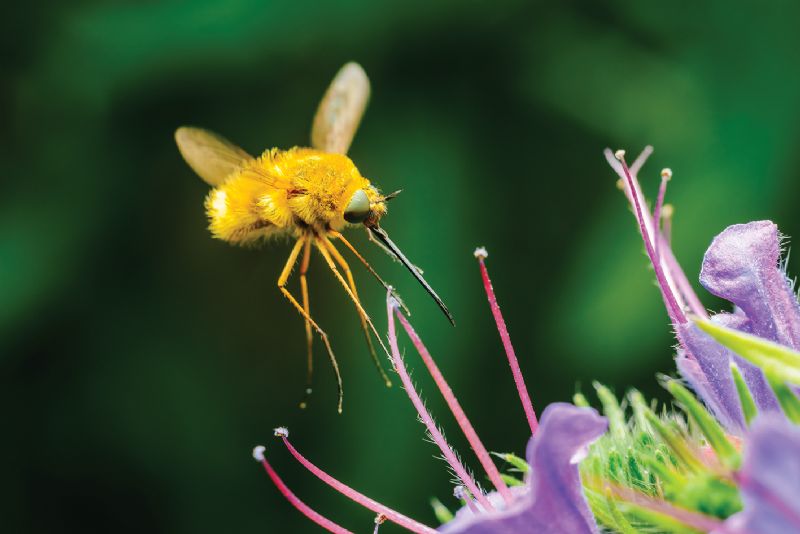- Home
- News, Articles & Reviews
We are hiring! Please click here to join our growing magazine delivery team in Gloucestershire!
Areas
Pets & Wildlife
Archive

Hairy feet and flies in disguise
All Areas > Pets & Wildlife > Wildlife Matters
Author: Dorothy Glen, Posted: Wednesday, 23rd February 2022, 09:00
There’s nothing quite like that first mild day of the year, when you leave the house and the air just smells sweeter. The sun has a little more warmth in it, and there’s movement where in the winter there was stillness. Leaves twitch, birds sing, suddenly it’s spring.
Closing your eyes to feel the warm sun on your face, you may also notice the beginnings of buzzing returning to our gardens. One of the first bees to emerge in early spring is the hairy-footed flower bee.
These little insects, which appear similar to small bumblebees (although they are a type of solitary bee), are likely to be the source of the first buzz of the year, from February onwards.
I have a little patch of lungwort (Pulmonaria) in my garden, which is their top food source of choice. It’s also very pretty, with pink and purple funnel-shaped flowers and spotty leaves – I encourage you to plant some if you’d like to encourage early pollinators and have a bit of spring colour.
A patch of pale hair, like a fluffy cream moustache
Hairy-footed flower bees are easily identified. They do indeed have hairy tufts on their lower legs, giving them their name. Unusually, females are almost entirely black. Males are gingery and more typically ‘bee coloured’. Each also has an endearing patch of pale hair on his face, like a fluffy cream moustache.
The other insect bringing an early buzz to spring gardens is in fact not a bee, but a bee-fly. Bee-flies also resemble small bumblebees, but have their own distinguishing features. You may become aware of a high-pitched hum close by, and look around only to find yourself face to face with a tiny round ball of fluff, hovering in mid air, with a long and slightly disconcerting stinger.
In fact, this ‘stinger’ is a proboscis, or straw-like tongue, for feeding on nectar, and the fly is completely harmless, not to mention characterful and pretty cute. Once you see one you’ll recognise them anywhere.
Bee-flies can be seen sunbathing on the ground
The common species you’re most likely to see in the garden is the dark-edged bee-fly, with dark panels along the tops of its wings. In flight, the wings are almost invisible with speed, but bee-flies can also be seen sunbathing on the ground, with wings resting out to their sides, giving it a distinctive shape reminiscent of a stealth bomber. Although, of all the ways to describe a bee-fly, stealthy would not be one of them!
Enjoy those first signs of spring and keep an ear out for buzzing in your garden or local green space.Copyright © 2025 The Local Answer Limited.
Unauthorized use and/or duplication of this material without express and written permission from this site's author and/or owner is strictly prohibited. Excerpts and links may be used, provided that full and clear credit is given to The Local Answer Limited and thelocalanswer.co.uk with appropriate and specific direction to the original content.More articles you may be interested in...


© 2025 The Local Answer Limited - Registered in England and Wales - Company No. 06929408
Unit H, Churchill Industrial Estate, Churchill Road, Leckhampton, Cheltenham, GL53 7EG - VAT Registration No. 975613000You are leaving the TLA website...
You are now leaving the TLA website and are going to a website that is not operated by us. The Local Answer are not responsible for the content or availability of linked sites, and cannot accept liability if the linked site has been compromised and contains unsuitable images or other content. If you wish to proceed, please click the "Continue" button below:




